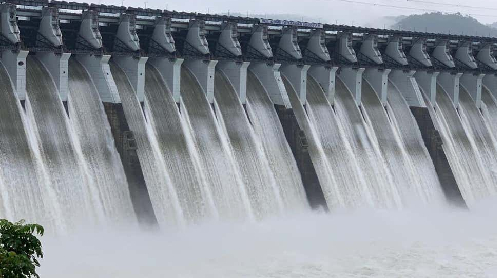ISLAMABAD: The Pakistan Meteorological Department (PMD) has suggested building large and small dams in catchment areas, especially to conserve the rainfall water during the monsoon period in order to cope with the floods and droughts in the country.
The Drought Bulletin of Pakistan prepared by the National Drought Monitoring Centre (NDMC) of PMD says Pakistan’s dams’ water storage capacity is much less than the neighbouring countries like India and, therefore, there is a need to manage the floods and storage of water.
“A natural disaster could not be stopped. Each disaster gives us a lesson to do better planning, management and taking some precautionary measures to minimise its impacts in future,” the report stated.
The stored water will help in protecting food security, especially to fulfil the water requirements of crops during drought periods in the country.
Predicts fog to remain till mid February; rules out possibility of drought in near future
The water will also help generate hydropower electricity which is an essential requirement of the country and may reduce unemployment in the country.
Overall, normal conditions are prevailing in the country and no intervention has been made by the government for drought during the October-December 2023 period.
The report says the national drought monitoring centre is continuously monitoring drought situations over the country and keeping the stakeholders and general public updated by issuing drought information on fortnightly and monthly basis.
In its seasonal forecast and its impact during January-March 2024 period, the report says overall a tendency for normal to slightly below normal precipitation is likely over the country with maximum negative temperature over northern parts. Northern Punjab, upper Khyber Pakhtunkhwa, Kashmir and Gilgit-Baltistan may receive slightly below normal precipitation, whereas southern Punjab, most parts of Balochistan and Sindh are expected to receive nearly normal precipitation during the forecast season.
Due to frequent frost in central and upper Punjab during January, affecting the growth of seasonal; vegetables, fruits and seeds during the period. High temperatures could shorten the Rabi crop season in Sindh and Punjab; less water will be available in river beds.
The report says frequent foggy conditions are likely to prevail in most of the plains areas of the country from January to mid of February, affecting crop growth and transportation in the country.
Due to prolonged dry and foggy conditions and below-normal temperatures, energy demands will increase during the extreme winter months.
The report says no impacts of drought have been reported from any parts of the country. Normal over eastern parts with a tendency towards below normal night time temperatures over south western parts during the forecast season.







